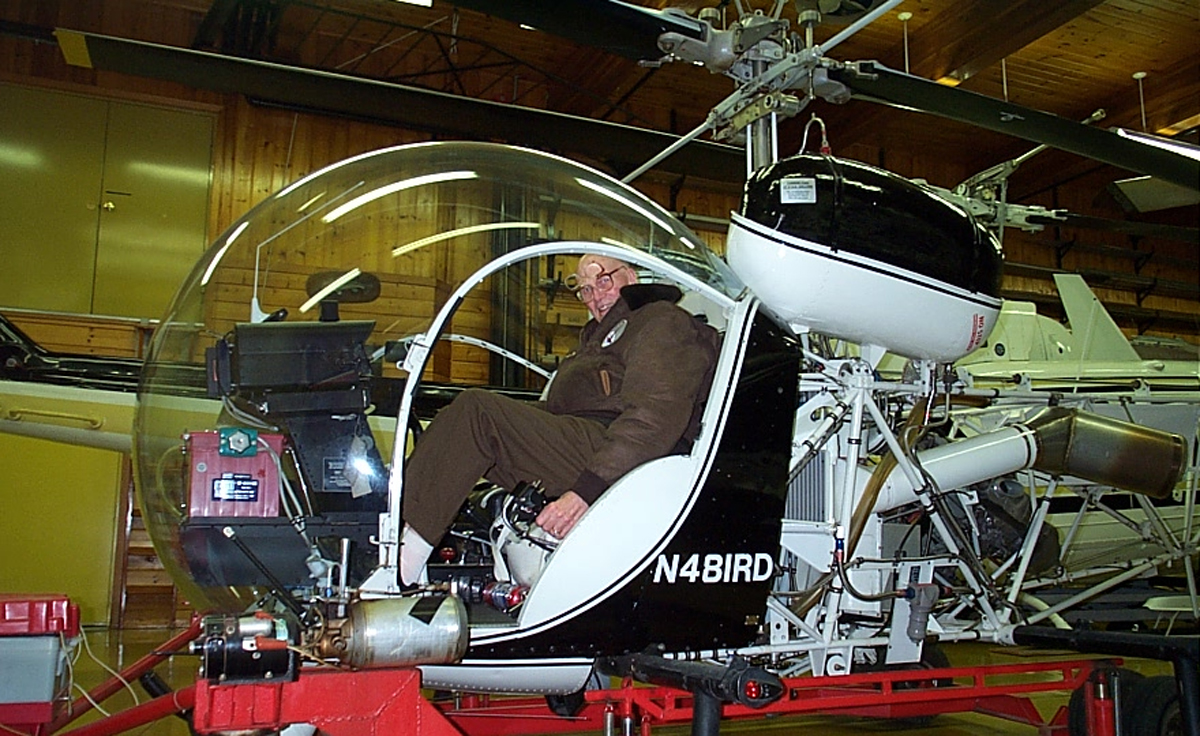Featured in 2003
Looking around a collection of hangars in northern Idaho containing 18 helicopters and fixed wing aircraft, it’s evident that Dr. Forrest M. Bird’s life truly mimics his name. He’s an aviator who loves to fly, as well as one who has advanced aviation in various ways. But he’s earned more acknowledgements in another field.
The resident of Sandpoint, Idaho, was inducted into the National Inventors Hall of Fame in 1995, for his unique fluid dynamics, which he employed in the invention of cardiopulmonary medical respirators. Bird introduced the world’s first reliable, low-cost, mass-produced respirator in 1958. Over the ensuing years, other Bird respirators were introduced. Inside a two-year period, the BABYbird reduced the death rate in low birth weight babies with respiratory problems from about 70 percent to less than 10 percent.
Dr. Bird says his life is the result of “fate, time and circumstance.” That life began in Stoughton, Mass., on June 9, 1921. Bird’s mechanical aptitude was apparent even in boyhood, when he began designing and making homemade tractors from Model T Fords. An interest in aviation, encouraged by his father, was equally obvious.
Bird’s father joined the Army Air Corps just before America entered World War I and was later sent to France to join the American Expeditionary Forces, becoming one of the first American pilots to fly early bombers over German soil. After WWI, in order to keep flying, he served in the Massachusetts Air Guard reserve.
In 1928, Bird’s father purchased a GXE Waco 10. In 1935, at age 14, Forrest Bird soloed in the Waco. Every day after school, he worked as a line boy at Canton Airport, near Boston.
By 1937, the Bird family Waco needed a complete restoration. Young Bird’s grandfather, who was an excellent woodworker, joined his son and grandson on the project, along with Capt. Bird’s close WWI friend, Roy Keeley, an early Civil Aeronautics Authority inspector. It was a great learning experience for Forrest, leading toward an aircraft and engine license.
With access to the Waco and many of his pilot friends’ fine aircraft, as well as flight instruction in exchange for work, Bird was soon on his way toward a commercial pilot’s license with an instructor’s rating. In the years leading up to WWII, he became a very experienced pilot for his age. An academic background in aeronautics and ROTC reserve commission prepared him for entry into the Army Air Corps as a technical air training officer in the Air Transport Command, flying the latest military aircraft.
With European unrest and increasing U.S. involvement, it would be only a matter of time before another world war. In an effort to move forward mechanical aptitudes in high school students, a very limited special mass educational academic program was advanced in the mid-1930s. Young men with high academic standards could accelerate their last two years of high school, centered on the sciences and military discipline, and gain early entrance into advanced college engineering studies.
Bird spent his last years of high school at the Brockton Armory. His college program focused on aeronautics, mechanical engineering and physics. His fourth year involved on-the-job training with an airline. Due to his ROTC reserve status and the increasing military involvement in the airlines, Bird was again accelerated into the first Military Transport Training Division class at Eastern Airlines in Atlanta.
After receiving his airline transport rating, Bird was called to active duty on Dec. 8, 1941. Following assignment to the Army Air Transport Command, he was sent to the Central Instructors School at Kelly Field, followed by Navy water school at Pensacola. From there, he left for Long Beach, Calif., to help establish the nation’s sixth ferry base and first instrument landing system. As the technical air training officer, he was in charge of ground training and supervised the preparation of pilot flight manuals for each new military aircraft introduced into service.
Bird ferried new model aircraft from the factories to various war zones and soon became a class 5P pilot, qualified in all military aircraft, including trainers, fighters, observation planes, bombers and transports.











